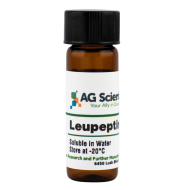Hearing loss, of which can be induced by either impulse noise or continuous noise, can induce temporary or permanent hearing loss dependent upon intensity and duration. Continuous noise is defined as noise that remains constant and stable over a certain period of time while impulse noises are intermittent and are composed of a rapid rise in the intensity of sound pressure. Hearing loss is a result of these noises causing direct mechanical damage to the inner structures of the ear.
Hearing loss, of which can be induced by either impulse noise or continuous noise, can induce temporary or permanent hearing loss dependent upon intensity and duration. Continuous noise is defined as noise that remains constant and stable over a certain period of time while impulse noises are intermittent and are composed of a rapid rise in the intensity of sound pressure. Hearing loss is a result of these noises causing direct mechanical damage to the inner structures of the ear. Other drug studies for hearing loss have investigated the mechanism involved in induced hearing loss. Because the electro-chemical gradient in the ear is required to mechanically move the outer hair cells in the ear and displace the basilar membrane in the cochlea during noise exposure, an excess of free radicals is produced as a byproduct of elevated metabolism. As a result, there is a breakdown of essential molecules and structures in the ear. Drugs that are designed to decrease active displacements and counteract free radicals reduce hearing loss attained by impulse and continuous noise, providing maximum protection if administered prior to the noise exposure or when injected prior and continued exposure.
Leupeptin in Animal Studies
Leupeptin, a new calpain inhibitor drug, was evaluated in this study published by the Journal of Occupational Medicine and Toxicology (London, England) in its ability to alleviate the symptoms of hearing loss. Calpains are calcium-activated proteases in which promote cellular death as a result of membrane, protein, and transcription factor breakdown. It has been speculated that calpains may be involved in noise induced hearing loss. In another study concerning hearing loss, exposing guinea pigs to loud broadband noise resulted in reduced partial pressure of oxygen in the perilymph and cochlear blood flow, and, with such conditions, may promote calpain up-regulation during the early stages of apoptosis within the organ of Corti, thus leading to the suspicion of calpains being involved in hearing loss. In chinchillas, the infusion of leupeptin into the scala tympani led to a reduction of hearing loss after being exposed to 14 days of 100 dB SPL octave band noises at 4.0 kHz. Leupeptin, when applied to organ cultures from the cochlea, was able to reduce hair cell loss resulting from the addition of gentamicin into the organ cultures. Outer hair cellular apoptosis was reduced when leupeptin was infused into the inner ear following noise exposure and was revealed to occur during the later stages of hearing loss. These experimental animals were exposed to M16 rifle shots and were then administered with a non-toxic concentration of leupeptin on the middle ear of one ear, while the opposing ear was applied with a saline solution to serve as a control. The threshold shift in the leupeptin-treated ear was smaller than that in the saline ear. A drug that has been studied extensively in animal models to study calpain inhibition and its tissue-protective effects, there has been no reported toxicity in small dosages and is not ototoxic even after being applied for 8 weeks onto the round window. In this study conducted by Haim Gavriel, Abraham Shulman, Alfred Stracher, and Haim Sohmer, there was some evidence of toxicity observed when leupeptin was administered at high dosages as well as when being administered through a mini pump directly into the cochlea, causing a high intra cochlear concentration of the drug. When leupeptin was applied to the middle ear cavity though a polyethelene tube implanted into the middle ear, a significant reduction in the threshold shift was observed; leupeptin, therefore, is a prime candidate for future treatments of hearing loss.The Future of Leupeptin in Clinical Trials
Although leupeptin holds promise in clinical treatments of induced hearing loss, the presently available form of leupeptin cannot be administered systematically and thus would require the destruction of the inner ear, thereby not being a current feasible form of treatment in humans. Any intentions to administer a form of leupeptin that can be given systemically must be assessed for possible systemic toxicity and ototoxicity, its efficacy with other drugs in protecting the ear from induced hearing loss, and the optimal time window for administration.[Get your Free Leupeptin Hemisulfate Brochure here.]
